Do you want to adopt a Miniature Labradoodle? Before you bring one home, there are some important things you should know. These cute dogs may be small, but they have big personalities! You’ll want to learn about their behavior, size, health problems, diet, and more.
Did you know Miniature Labradoodles are a mix of two different dog breeds—a Labrador Retriever and a Mini or Toy Poodle? That’s what gives them their curly coat and playful nature.
If you want to know all the details about this fun and loving dog, just keep reading till the end of the article!
What is Mini Labradoodle
The Miniature Labradoodle is a mix between a Labrador Retriever and a Miniature Poodle. In some cases, a Mini Labradoodle might have parents like a Labradoodle and a Mini Poodle, or even two Mini Labradoodles. This is called a second-generation cross.
This mixed breed was first created to be a smaller service dog that could also be a better match for people with allergies to dog fur. Because they are a mix, these dogs can have different traits depending on which parent they take after most.
Most Mini Labradoodles are known for being smart, friendly, and easy to train. That’s why many of them work as therapy dogs or service dogs, and they also make wonderful family pets.
Even though the Mini Labradoodle is not recognized by the American Kennel Club (AKC), they are accepted by other dog groups like the American Canine Hybrid Club.
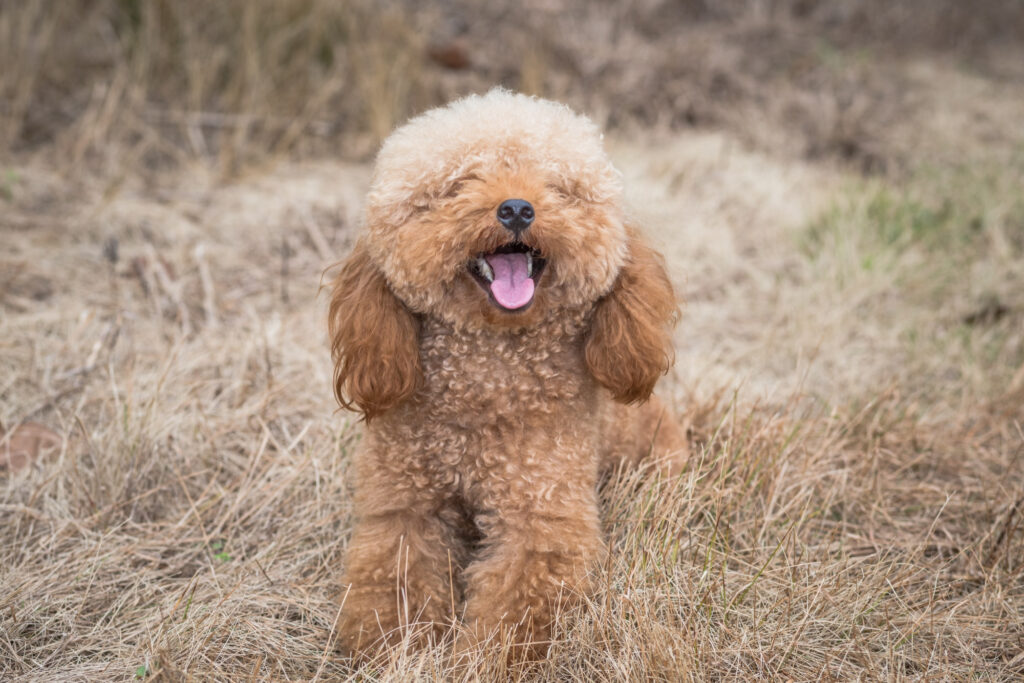
Physical Apperances
Size
Miniature Labradoodles are known for being small to medium in size, which makes them a great choice for many types of homes—even apartments.
- Weight: Most Mini Labradoodles weigh between 15 and 35 pounds.
- Height: They usually stand about 14 to 17 inches tall at the shoulder.
Their exact size can vary depending on the type of Poodle used in the mix. So, some may be a little smaller or a little bigger, giving you different size options to fit your lifestyle.
Growth
Miniature Labradoodles usually reach their full size between 12 and 14 months old. During this time, they need healthy food and proper care to grow strong and stay healthy.
What Affects Their Growth?
- Genetics: The size of their parents plays a big role in how big your Mini Labradoodle will get.
- Nutrition: Feeding them good quality dog food helps them grow properly and develop strong bones.
Mini Labradoodle vs. Standard Labradoodle
Mini Labradoodles are much smaller and more compact than Standard Labradoodles. This makes them a better fit for smaller homes or apartments, while still giving you the loving personality of a full-sized doodle!
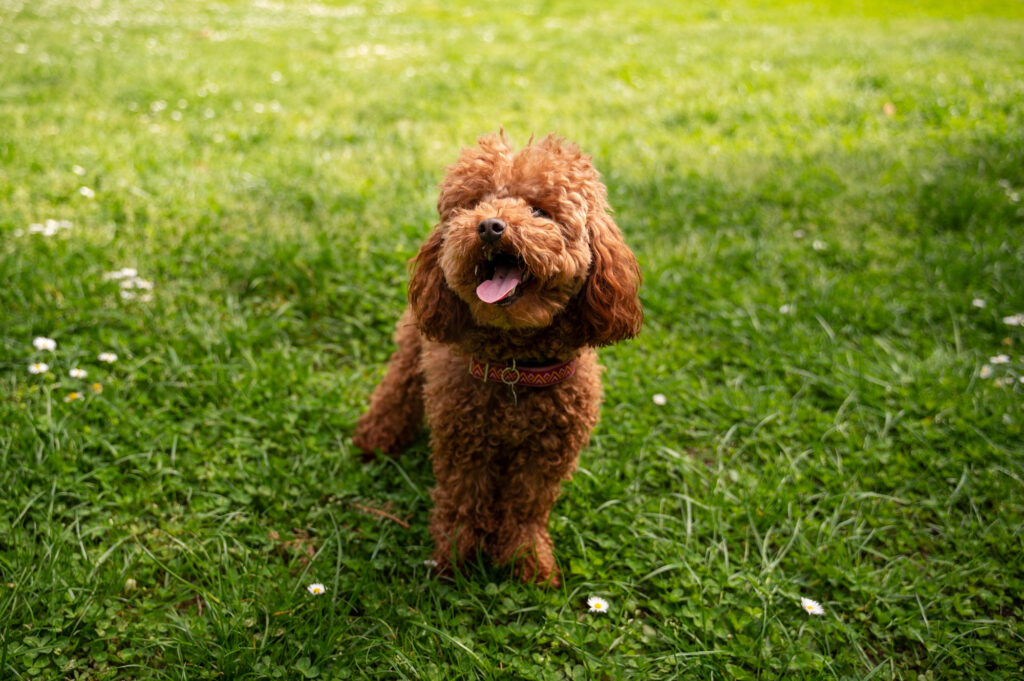
Mini Labradoodle Coat Type and Length
Miniature Labradoodles have five main coat types that can vary depending on which parent they take after:
- Straight Coats: These coats are sleek and smooth, much like the Labrador parent. They’re easy to groom but shed moderately, so they might not be the best choice for people with allergies.
- Wavy Coats: A soft mix of both parents, wavy coats are low-shedding, making them a popular choice for many owners.
- Curly Coats: These coats come from the Poodle parent and are tightly curled. They’re the most hypoallergenic because they shed very little but do need regular grooming to prevent matting.
- Wiry Coats: These coats are rough and stiff, and while they’re rare, they require frequent brushing to stay neat and tidy.
- Corded Coats: Resembling dreadlocks, these coats are very rare and need special care, including professional grooming, to stay clean and manageable.
Coat Colors
Miniature Labradoodles come in a wide range of beautiful colors, each one adding to their unique charm:
- Black: Sleek and elegant, this classic color is always stylish.
- Brown: A rich, warm color that’s very popular with owners.
- White: Bright and eye-catching, it makes your pup stand out.
- Cream: A soft, gentle shade for a sweet and calm look.
- Apricot: A golden, cheerful hue that brings a lively vibe.
- Parti: A fun mix of two or more colors, giving your dog a playful and unique pattern.
These gorgeous coats are one of the reasons why Mini Labradoodles are so loved—they’re not just hypoallergenic, but also visually stunning!
Temperaments and Personality

Miniature Labradoodles are known for their sweet, social, and outgoing personalities, making them the perfect companions for many different types of families. They love being around people and are quick to make new friends, especially with their families.
Intelligent and Easy to Train
These dogs are super smart, taking after both their Labrador and Poodle parents. They love to learn and please, which makes them great for first-time dog owners. You can keep their brains busy with obedience training, puzzles, and fun games.
Loving and Compassionate
Mini Labradoodles are very affectionate and gentle. They get along well with children and other pets, making them an amazing addition to any family. Their loving nature helps them easily fit into your home and life.
Adaptable to Apartment Living
Good news if you live in a small space! Mini Labradoodles don’t need a huge yard to be happy. As long as they get enough exercise and mental stimulation, they can easily adapt to apartment living.
Playful and Energetic
These dogs have plenty of energy and love to play, especially with their families. They enjoy outdoor activities like swimming or hiking, making them a great choice for active households.
Not Ideal Guard Dogs
While Mini Labradoodles are kind and gentle, they’re not suited to be guard dogs. However, they are excellent at being watchdogs, letting you know when someone’s at the door with a bark.
Socialization is Key
Early socialization is very important for Mini Labradoodles. Exposing them to new people, places, and pets while they’re puppies helps them grow into well-rounded adult dogs who handle different situations easily.
These dogs are a great mix of intelligence, affection, and adaptability, which makes them perfect for families, singles, and seniors. Mini Labradoodles crave human affection and are happiest when they’re with their loved ones.
They’re also playful and energetic but have low prey drives, meaning they won’t chase small animals. Well-socialized Mini Labradoodles usually get along well with children and other pets. But since they’re small, they can be hurt easily by rough play, so always supervise young kids around them.
While they may bark to alert you to visitors, they don’t tend to bark for no reason. Training them early to control barking can be a good idea.
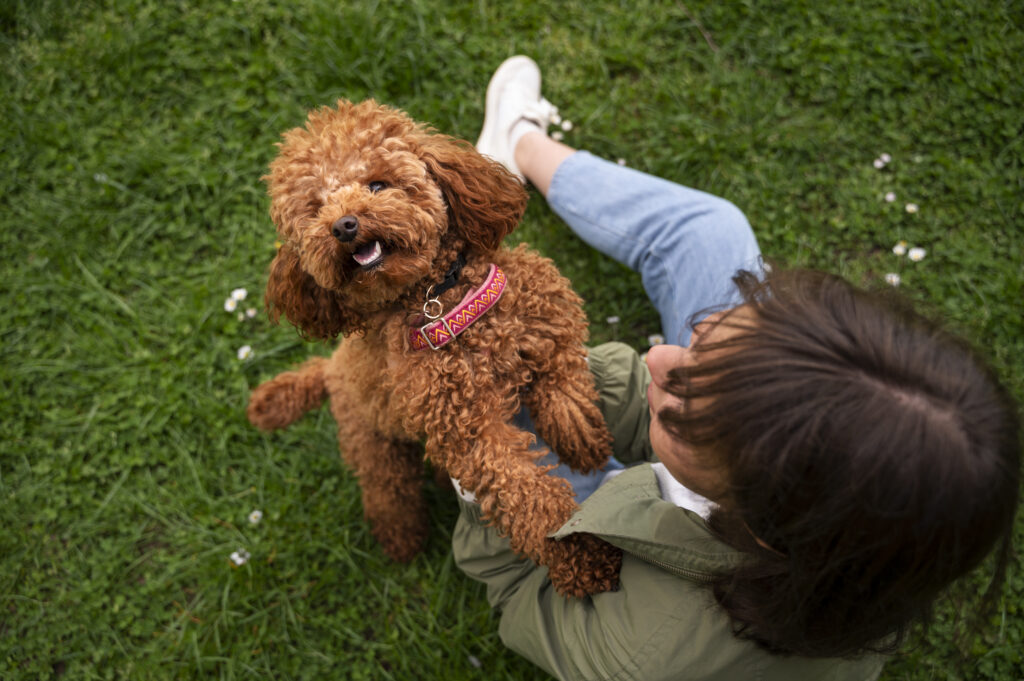
MIni Labradoodle with Kids and Other Pets
Miniature Labradoodles are wonderful companions for children and other pets because they are so gentle, playful, and friendly. Their small-to-medium size makes them perfect for families with younger kids—they’re easy to handle and not likely to accidentally knock over a child while playing.
Why Mini Labradoodles Are Great for Kids
- Energetic Playmates: These pups are full of energy and love playing. Active children can have hours of fun with them, making them great playmates.
- Gentle Disposition: Mini Labradoodles are naturally gentle and tolerant, which helps them get along well with family members, including kids. They do best in environments where there’s mutual respect between children and pets.
Safety and Supervision
Even though they’re kind and friendly, supervision is important when they’re around young children. Teach kids how to interact respectfully with dogs—like not pulling tails or interrupting them when eating—to make sure everyone stays safe and happy.
Compatibility with Other Pets
Mini Labradoodles are very sociable and can easily live with other pets, including other dogs and even cats. With proper introductions and early socialization, they can form strong bonds with other animals. They are rarely aggressive but, as always, it’s a good idea to keep an eye on their interactions until you’re sure they’re comfortable.
Are Mini Labradoodle are Trainable?
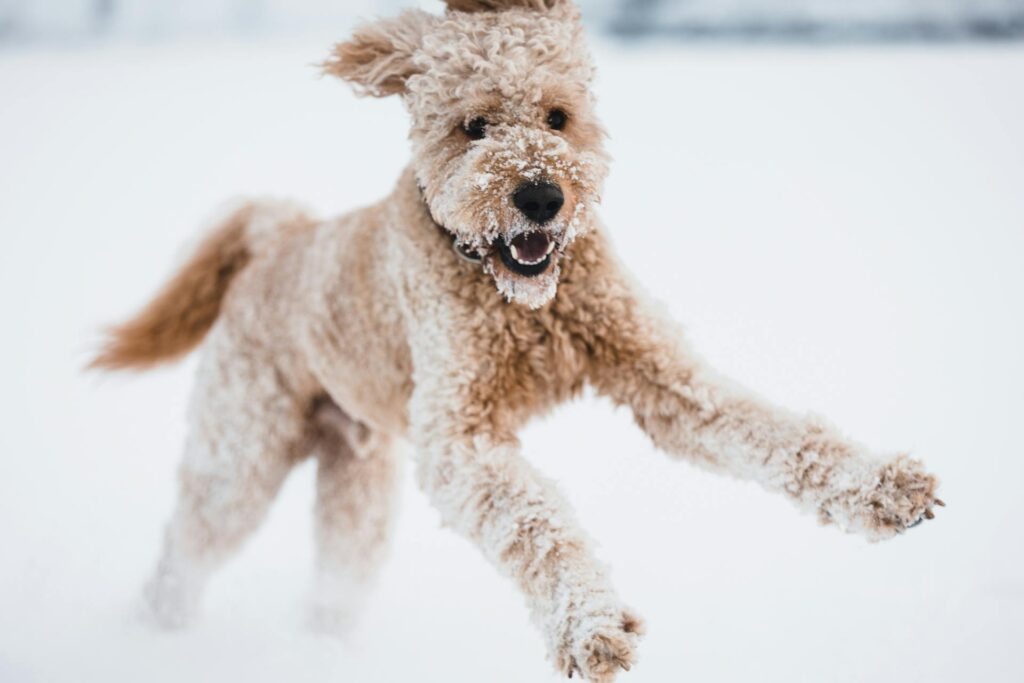
Mini Labradoodles are highly intelligent and easy to train. They quickly pick up new commands and love to learn fun tricks, making them an ideal choice for first-time dog owners.
Miniature Labradoodle Intelligence Level
Mini Labradoodles are naturally smart and eager to please, which makes them easy to train. Whether you’re teaching them basic commands or fun tricks, they catch on quickly. Their intelligence, combined with their desire to make you happy, helps them excel in obedience training and interactive games.
Common Behavioral Traits
- Barking: Mini Labradoodles aren’t known for being excessive barkers, but they may alert you when someone is at the door. This makes them great watchdogs, without being too noisy.
- Affection: These dogs thrive on human companionship. They are happiest when they’re included in family activities and get plenty of attention and love.
- Energy Levels: Mini Labradoodles are active dogs that love to play. They need regular exercise, like walks or playtime, to stay happy and healthy.
Are Mini Labradoodles Energetic?
Yes, Mini Labradoodles are very energetic! They enjoy spending time with their families, running around, and playing games. Their active nature makes them great for households that enjoy outdoor adventures or regular playtime.
Generation of Mini Labradoodle
Mini Labradoodles come in different generations, each offering unique traits depending on the mix of Labrador Retriever and Poodle. Understanding these generations can help you pick the perfect Mini Labradoodle for your needs and lifestyle.
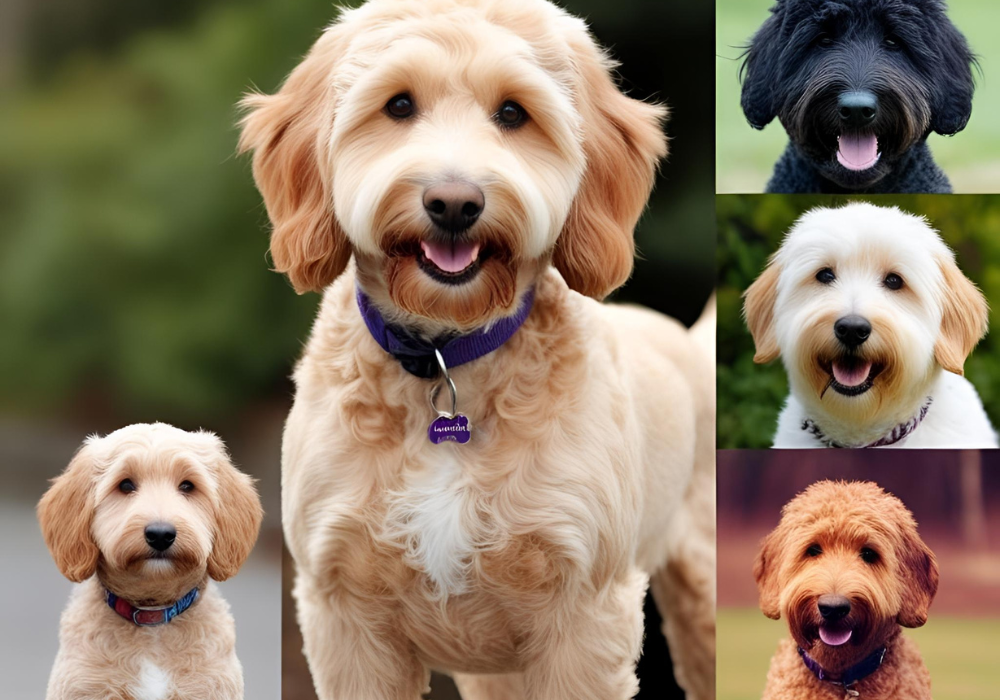
F1 Mini Labradoodle
An F1 Mini Labradoodle is a first-generation hybrid, created by crossing a Labrador Retriever with a Miniature Poodle. This 50/50 mix results in dogs with a variety of coat types, ranging from wavy to straight. The mix of traits from both parents can vary, so each F1 Mini Labradoodle is a bit different.
F1B Mini Labradoodle
The F1B Mini Labradoodle is a cross between an F1 Mini Labradoodle and a Poodle. This generation is 75% Poodle and 25% Labrador, making them more likely to have a curly, hypoallergenic coat, which is great for people with allergies. Their coat sheds less, making them a better choice for those seeking a low-shedding dog.
F2 Mini Labradoodle
F2 Mini Labradoodles are second-generation hybrids, created by breeding two F1 Mini Labradoodles together. Since both parents are F1s, these puppies can have a wider range of traits. Their coats can be wavy or curly, and the amount they shed can vary depending on their genetic mix.
F2 Miniature Labradoodle
An F2 Miniature Labradoodle refers to a second-generation dog bred specifically for a smaller size. These dogs maintain the charming personality of the Mini Labradoodle but are more compact, making them perfect for families or individuals with limited living space.
Each generation of Mini Labradoodle has its own unique characteristics, so understanding these differences can help you choose the dog that fits your lifestyle and preferences.
Lifespan and Health
Mini Labradoodle Lifespan: How Long Do They Live?
Mini Labradoodles generally enjoy a lifespan of 12 to 15 years. With proper care, regular vet visits, and a healthy lifestyle, some may even live longer. Keeping them active, well-fed, and properly groomed can help ensure they enjoy a long, happy life.
What Health Problems Do Mini Labradoodles Have?
Miniature Labradoodles are generally healthy and resilient, but like all dog breeds, they can be prone to certain health conditions. Being aware of these potential issues allows you to take steps to keep your furry friend in top health.
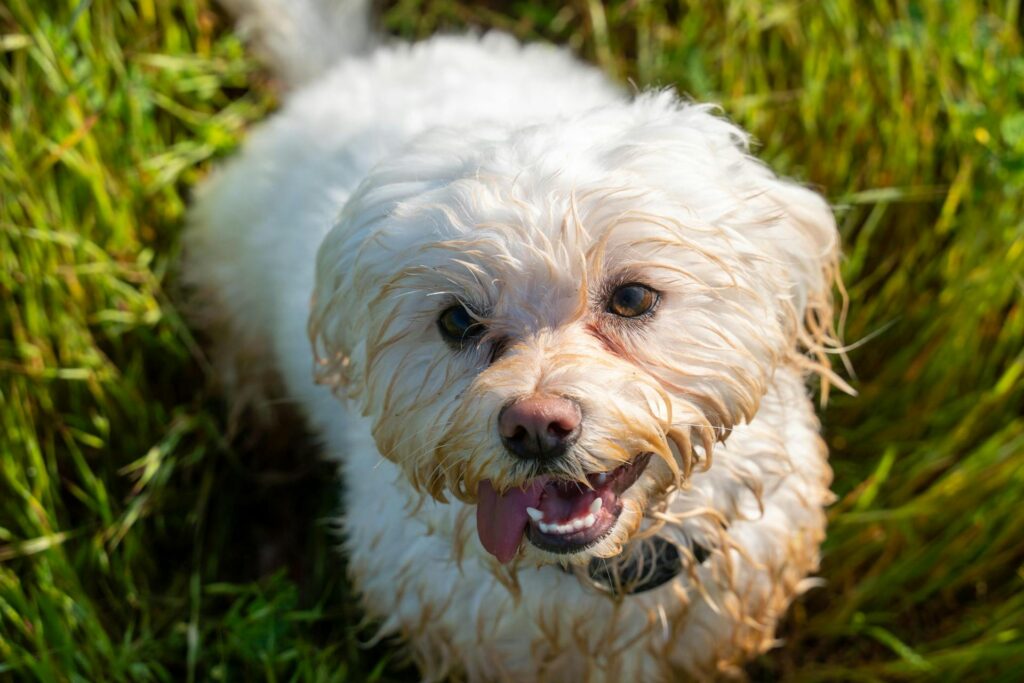
Common Health Issues:
Ear Infections
These adorable dogs have floppy ears that can trap moisture and debris, making them prone to ear infections. It’s important to clean their ears regularly, especially if they swim often. Clean at least every couple of weeks to avoid infections.
Addison’s Disease
This inherited condition, which can be passed down from both the Poodle and Labrador sides, affects the dog’s ability to regulate cortisol production. Symptoms include fatigue, excessive thirst, a fast heart rate, and digestive problems. If you notice these signs, take your dog to the vet as soon as possible for early treatment.
Elbow and Hip Dysplasia
These conditions are common in many breeds, including Mini Labradoodles. They lead to joint pain and mobility problems. Look out for signs like difficulty jumping, lack of exercise, or swollen joints. Early intervention through regular vet visits can help manage these issues before they become more serious.
Food Allergies
Some Mini Labradoodles may develop food allergies, leading to symptoms like diarrhea, itching, or a noticeable odor. If your dog shows any of these signs, consult with your vet. They may recommend a balanced diet and potentially an allergy-friendly food plan.
Other Potential Health Concerns
In addition to the above, Mini Labradoodles can be susceptible to:
- Epilepsy
- Hypothyroidism
- Cataracts
- Progressive Retinal Atrophy
Reputable breeders will test for these conditions and screen their dogs to avoid passing these issues on to the puppies.
Preventative Care Tips:
- Regular Vet Visits: Schedule check-ups to detect any health issues early.
- Balanced Diet: Maintain a healthy diet to prevent obesity and support overall well-being.
- Grooming: Regular grooming helps prevent skin infections and keeps ears clean.
- Exercise: Keep your Mini Labradoodle active to prevent joint issues and maintain a healthy weight.
Tips for Extending Your Miniature Labradoodle’s Life:
- Provide High-Quality Food: Choose food tailored to their age and activity level to keep them in peak condition.
- Exercise: Ensure daily physical activity to maintain a healthy weight and strong muscles.
- Dental Care: Don’t forget to maintain their dental health, as poor oral hygiene can lead to other health issues.
- Watch for Early Signs: Early detection of problems like hip or elbow dysplasia can be managed with early intervention.
Choosing a Healthy Mini Labradoodle
The health of your Mini Labradoodle starts with their parents. Reputable breeders will screen both parent dogs for common genetic conditions. Always ask about the health history of the parents and any health tests or clearances they’ve undergone.
By staying proactive with health care, grooming, and exercise, you can help ensure that your Mini Labradoodle lives a long, healthy, and happy life.

Care and Maintenance
Labradoodle Miniature Breed Maintenance Essentials
Miniature Labradoodles are generally low-maintenance, but like any dog, they require regular grooming, exercise, and mental stimulation to stay happy and healthy. Here’s what you need to know about caring for your Mini Labradoodle.
Exercise and Activity Requirements
Mini Labradoodles are energetic and playful, so they need daily exercise to burn off their energy and keep them mentally stimulated.
- Walks: Aim for 30 to 60 minutes of walking or physical activity each day. This can include walks, jogs, or even trips to the dog park.
- Interactive Play: Play fetch, tug-of-war, or engage in other fun activities that keep them moving.
- Puzzle Toys: Mini Labradoodles are highly intelligent, so provide puzzle toys or brain games to keep their minds sharp and entertained.
This combination of physical and mental exercise helps keep them in good health and prevents boredom, which can lead to destructive behavior.
Feeding Guide: Diet and Nutrition for Miniature Labradoodles
Proper nutrition is essential to your Mini Labradoodle’s overall health. Their diet should include high-quality proteins, healthy fats, and a variety of essential vitamins. Here’s how to feed your Mini Labradoodle:
- Puppies: Mini Labradoodle puppies typically need more frequent meals—3 to 4 times a day—as they are growing and have higher energy needs. Adjust the frequency and portion sizes as they mature.
- Adult Dogs: Once they are adults, most Mini Labradoodles do well on two meals a day, but this can vary based on their activity level and metabolism.
Always provide fresh water, and be mindful of their weight to prevent obesity, which can lead to health issues like joint problems and heart disease.
Grooming: Coat Maintenance, Shedding, and Hypoallergenic Qualities
Mini Labradoodles may inherit different coat types from their parent breeds, so their grooming needs can vary. Regardless of the coat type, they will need regular grooming to stay healthy and comfortable.
- Brushing: Aim to brush your Mini Labradoodle 2–3 times a week to prevent tangles, mats, and shedding. If they have a wavy or curly coat, more frequent brushing may be required to avoid matting.
- Bathing: Bathe your Mini Labradoodle every 4–6 weeks or as needed, especially if they get particularly dirty or develop a smell.
- Professional Grooming: Depending on your dog’s coat, you may want to take them to a professional groomer every 6–8 weeks for a trim or styling to maintain their hypoallergenic coat. Groomers can also help with ear cleaning and nail trimming.
Coat Types and Grooming Differences:
- Poodle-like Coat: If your Mini Labradoodle inherits a Poodle-like coat, it will be non-shedding but high-maintenance. This coat requires daily brushing and regular trimming to prevent it from becoming tangled.
- Labrador-like Coat: If your Mini Labradoodle inherits a Labrador-like coat, it will shed more and be lower-maintenance. This coat requires weekly brushing to remove dead hair and keep it looking neat.
In some cases, your Mini Labradoodle may have a combination coat, so you may need to adopt grooming practices for both types.
Regular Grooming Tasks:
Aside from coat care, there are other important grooming tasks to keep your Mini Labradoodle in tip-top shape:
- Nail Trimming: Trim their nails once or twice a month to keep them at a manageable length. Long nails can cause discomfort and even lead to mobility issues.
- Dental Care: Brushing your dog’s teeth daily is ideal to prevent gum disease, tooth decay, and bad breath. Professional cleanings at the vet are also recommended.
- Ear Care: Check your dog’s ears regularly, especially since Mini Labradoodles often have floppy ears. Keep them dry and free of debris to prevent infections. Clean them carefully when necessary.
General Grooming Tips:
- Start Grooming Early: Getting your Mini Labradoodle used to grooming from a young age helps them remain calm and cooperative during grooming sessions.
- Invest in Good Tools: Use high-quality grooming tools like brushes, nail clippers, and ear cleaning solutions to make grooming easier and more effective.
- Monitor Coat Health: If your dog starts shedding excessively or their coat becomes unhealthy, consult your vet to rule out any underlying health problems.
Do Mini Labradoodle Shed?
Miniature Labradoodles are often considered a great option for individuals with pet allergies due to their low-shedding and hypoallergenic qualities. Here’s why they make a fantastic choice for allergy sufferers:
Low-Shedding Coat
Unlike many other breeds, Mini Labradoodles typically lack an undercoat, which is one of the primary reasons they shed less than other dogs. This helps reduce the amount of fur that is released into the environment, making them a cleaner and more allergy-friendly option.
While no dog is completely hypoallergenic, the Mini Labradoodle’s coat produces far less dander and fur, which can significantly minimize allergic reactions.
Hypoallergenic Nature
Mini Labradoodles inherit their hypoallergenic traits from their Poodle parent, known for producing less dander. This is a key reason why they are a good fit for people who are sensitive to dog allergens. Their coat is more likely to be curly or wavy, which helps trap the hair and dander, preventing it from spreading through the house as much as it would with a breed that sheds more heavily.
However, it’s important to note that regular grooming and cleaning are still essential to maintain their hypoallergenic properties. Regular brushing helps minimize loose hair, and frequent cleaning of their bedding and living spaces can further reduce allergens in the home.
Own Experience
Miniature Labradoodles are not just adorable—they’re also incredibly intelligent and eager to please, making them a breeze to train. Here’s why these lovable pups are a great choice for dog owners of all experience levels and how you can best support their training journey:
Quick Learners and Easy to Train
Thanks to their Poodle and Labrador parentage, Mini Labradoodles inherit the best traits of both breeds when it comes to training. Poodles are renowned for their intelligence, while Labradors are known for their friendly, eager-to-please nature. This combination makes Mini Labradoodles highly trainable and motivated to learn new commands and tricks.
Positive Reinforcement and Consistency
Like most dogs, Mini Labradoodles respond best to consistent training methods and positive reinforcement. Reward-based training—where you offer treats, praise, or play when they follow commands—works wonders for these pups. Since they are highly social and motivated by affection, providing rewards helps build a strong bond between you and your dog.
Training Opportunities for All Experience Levels
Whether you’re a first-time dog owner or an experienced one, the Mini Labradoodle is a great fit. If you’re new to training, enrolling your pup in puppy training classes is a fantastic way to get started.
These classes not only teach you valuable training techniques but also give your dog opportunities for early socialization, helping them get accustomed to different people, environments, and other animals. Early socialization is key to raising a well-rounded and confident dog.
Ongoing Training for Mental Stimulation
Since Mini Labradoodles are active and intelligent, it’s important to continue training throughout their lives. Ongoing sessions, like teaching new tricks, participating in agility courses, or even engaging in interactive games like puzzles, help keep their minds sharp and their energy focused. Mental stimulation is just as important as physical exercise for keeping your Mini Labradoodle happy and healthy.
Where to Buy a Miniature Labradoodle
If you’ve decided that a Miniature Labradoodle is the right pup for your family, it’s important to find a responsible and reputable source. Here are some options:
1. Reputable Breeders
Look for breeders who:
- Provide health clearances for both parent dogs.
- Allow you to visit their facility or provide virtual tours.
- Are transparent about the puppy’s lineage, health screenings, and early socialization.
Tip: A responsible breeder will ask you questions too—they care where their puppies go!
Trusted Breeder Directories:
2. Adoption & Rescue
While rarer, Mini Labradoodles can be found in rescues. Check:
- Local animal shelters and humane societies.
- Breed-specific rescues like:
Adopting is a great way to give a deserving dog a second chance at a happy life.
3. Avoid Puppy Mills
Be cautious of:
- Sellers offering “too good to be true” prices.
- No proof of vaccinations or vet care.
- Meeting in public places instead of their home or facility.
A cheap puppy now may cost more later in vet bills and heartbreak.
Conclusion
Miniature Labradoodles are the perfect blend of affection, intelligence, and versatility, making them an ideal fit for many different lifestyles. Whether you’re searching for a hypoallergenic companion or an energetic family dog, the Mini Labradoodle ticks all the boxes. Their friendly nature, combined with their intelligence and ease of training, makes them excellent pets for first-time owners and experienced dog lovers alike.
With proper care, regular grooming, and lots of love, your Mini Labradoodle will thrive, becoming a beloved member of your family. Their playful personality, coupled with their adaptability, means they’ll be a loyal and joyful companion for years to come.

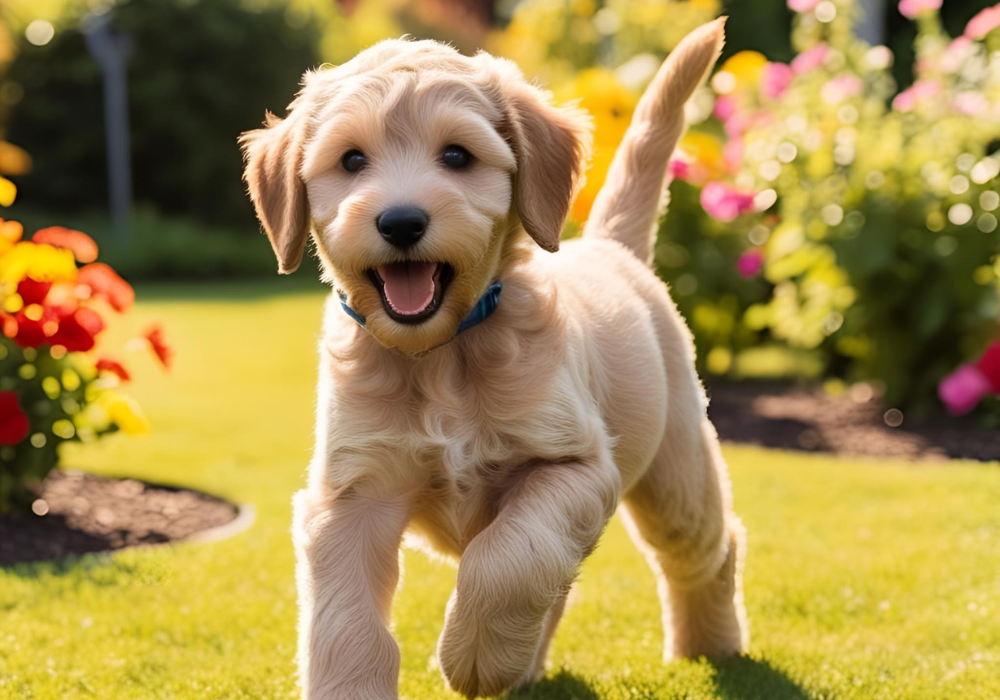



1 thought on “Miniature Labradoodle – Complete Mini Labradoodle Guide (2025)”